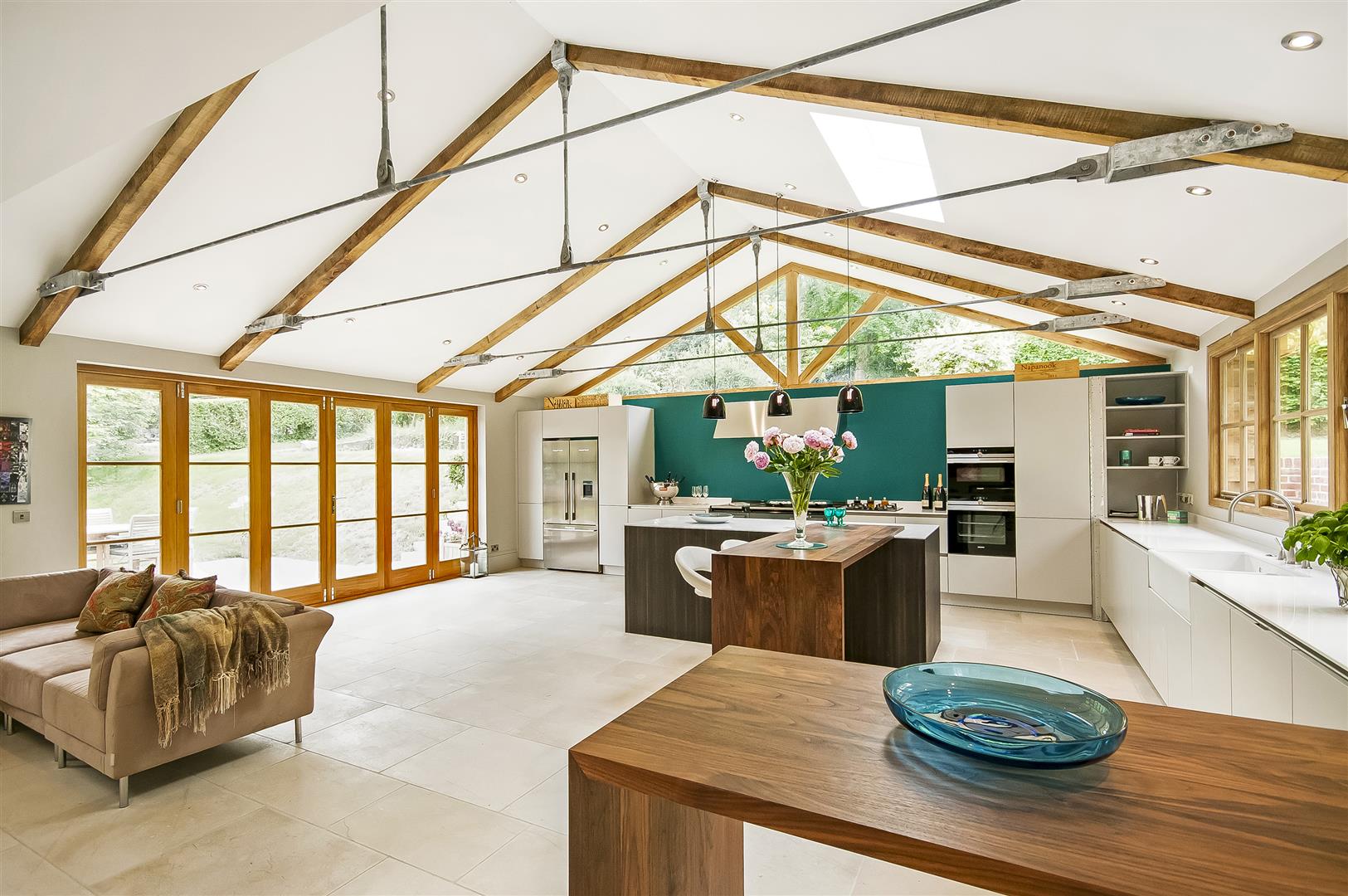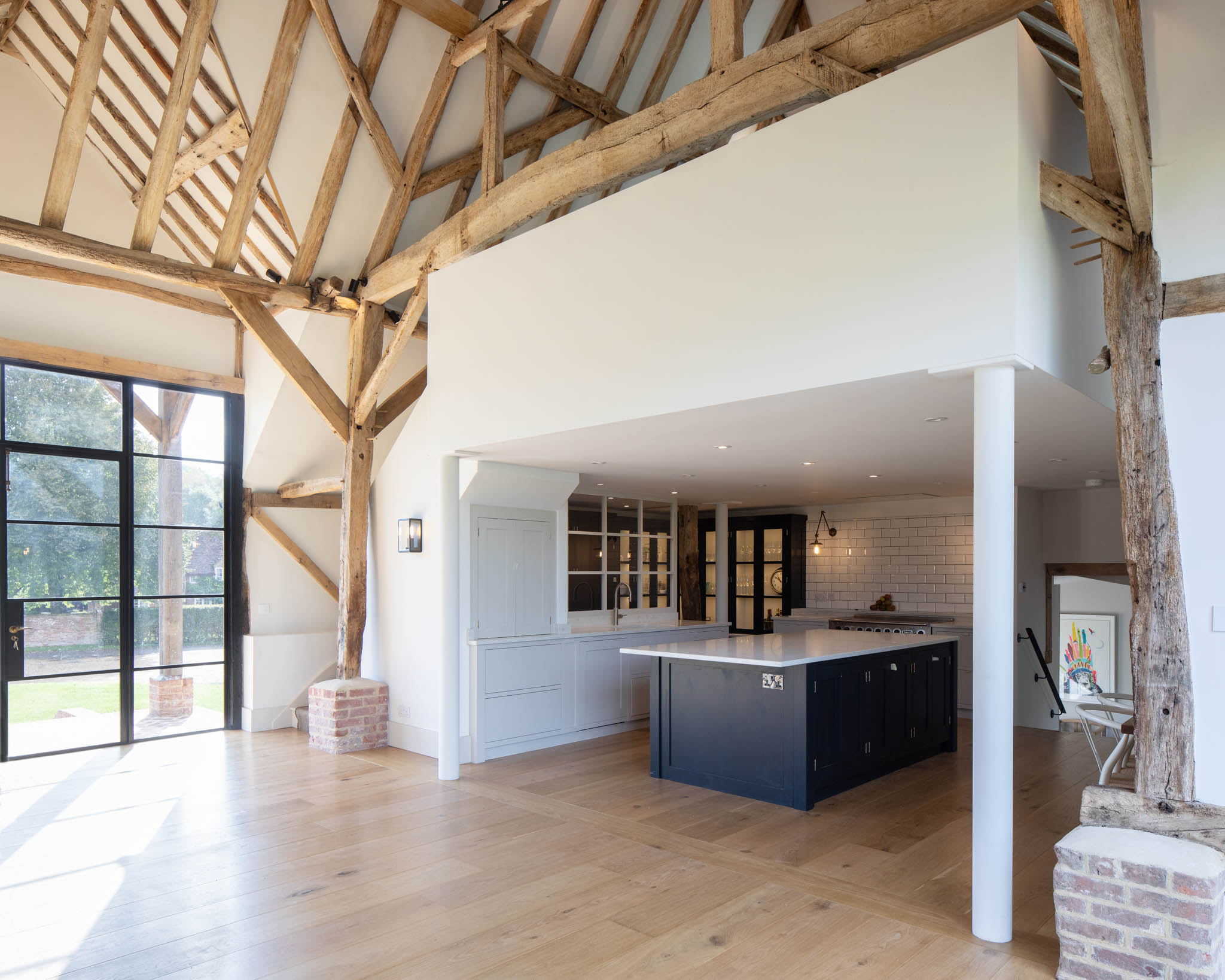Open plan vs broken plan
Open plan vs broken plan
The trend for open plan living has lasted for decades, but ‘broken plan’ is the new kid on the block
Open plan living is all about increasing space, light and flow of movement within our homes. Kirstie Allsopp on TV’s “Location, Location, Location” frequently advises would-be buyers to knock down interior walls and join rooms together to form bigger and brighter spaces. Taking a sledgehammer to dividing walls – usually between the kitchen and under-used dining room – has never been more popular.
Broken plan is an alternative concept that aims to keep the light and spaciousness of open plan living while at the same time splitting rooms into areas for cooking, dining, socialising or simply being alone.
Pros and cons of open plan

It’s easy to see the benefits of open plan from enabling multiple activities to be carried out in one area to creating a sense of sociability and allowing light to flow. If the multi-functional room includes a kitchen, it stops the cook feeling isolated while preparing meals. But as more and more of us remodel our downstairs from a series of small rooms into one huge space, the drawbacks as well as the advantages of this kind of layout can become obvious, especially if you open up all your ground floor. One interconnected space for cooking, dining and relaxing may appear the dream but the reality can be different,
Families who spent months in lockdown together juggling home working and home schooling realised the value of doors they can close behind them. Open-plan houses can lack privacy and quiet areas. Having nowhere to entertain friends while the children watch TV or play can be a problem. Sound travels in open plan homes, so they can be noisy. If the kitchen is in full view from the rest of the ground floor, any mess is visible as you eat your meals, relax on the sofa or entertain guests.
How is broken plan different?
Broken plan interiors have more in the way of pockets of privacy and cosiness. Instead of zoning the room with changes of wall colour or floor materials as you might for fully open plan layouts, broken plan divides the space using structural elements, such as split levels and sliding doors. For example, you could have an open plan kitchen and living room next to each other separated by steel-framed glazed doors to be opened or closed as required. This can reduce noise and cooking smells to enable a better sense of relaxation without totally shutting off one room from another.
Or, if you are just starting your project, consider knocking down half a wall between the kitchen and dining room and leaving the top open, allowing views through while at the same time giving you more wall-space to play with to solve dilemmas like hiding kitchen clutter which can be a problem in open plan layouts. While hatches are definitely a thing of the past, widening a doorway between a kitchen and dining room is a workable, modern solution.
Ways to make it work
There are many ways to achieve a broken plan interior. Key considerations include how to create the same flow of light and social aspect of open plan. Below are some suggestions:-
- Split levels – changing floor and ceiling heights is a great way to create broken plan interiors without sacrificing the social aspect or amount of light. For example, a few steps could divide a kitchen from a cosy snug. The kitchen is often a hub of activity, so it’s important to have a different space for relaxation.
- Glazed partitions and internal windows - by dividing a room with glazed panels to the ceiling you can solve the noise issue without blocking any light, carving out a quiet study area, for example. None of the sense of space of a large room is lost as it would be with a solid partition wall.
- Pocket, sliding doors – can offer the option of creating separation when required but slide back invisibly inside interior walls when you want to join the two rooms.
- Half walls can divide a space but without reducing sociability or flow of light. They can be teamed with shutters to give the option of closing a kitchen from a dining or living area, for example.
- Bespoke fireplace with chimney – which can be viewed from either side can neatly divide an open plan living area. It’s another way to create a cosy, private atmosphere without losing the sense of space. For example, between a main seating area on one side and a smaller snug on the other.
- Extra wide ‘doorways’ – downstairs rooms can be connected via oversized room openings instead of doors, which allow spaces to be visually connected and feel larger while still giving pockets of privacy in each room.
- Open shelving – can divide living and sleeping areas, for example in a small apartment, while at the same time providing valuable storage. This is a low-cost way to achieve broken plan when making permanent, structural changes is not an option.
- Mezzanines – can create separation between areas that serve different purposes. This approach works especially well for kitchen and living areas where the cooking/dining space is on the lower level and the relaxing/sleeping area is located above. Glass balustrades could keep the spaces linked.
What does the future hold for open plan?

Over the last few decades, millions of interior walls have been demolished as homeowners have wanted to update poky rooms and cramped interiors. Open plan layouts can work well, especially if you know which walls to remove to allow light to flow. But it needs a truly good design or else homes can end up feeling cavernous and unwelcoming as well as being noisy and difficult to heat.
Broken plan offers an alternative, more flexible approach which divides internal spaces without totally shutting off one room from another. This option is likely to appeal to those who love the light and airy feel of open plan but want some separation and cosy areas too.
All images supplied by Scot Masker from Masker Architects
